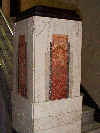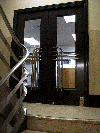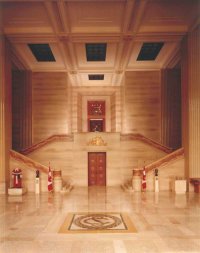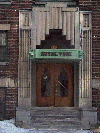

| Home | |
| Family | |
| Personal | |
| Work | |
| Fun Stuff | |
| Downloads | |
| Investment | |
| Links | |
| Contact Me | |
| >>Home>>Personal>>Art Deco | |
|
|
|
| Ottawa Art Deco Welcome to my Ottawa Art Deco page. I am not an architect, nor do I have any formal training in the study of architecture or the Art Deco period. I am an avid reader and afficionado, however, and to that end I am placing what I have found in Ottawa on this site. I am working on obtaining some higher resolution graphics of all of these impressive pieces of architecture, as well as expanding my page to include all Ottawa Art Deco architecture. Please see my bibliography, where I credit any sources I have used in my research.  Ottawa
Hydro Electric Commission Ottawa
Hydro Electric CommissionBuilt between 1934-1935, this fabulous Art Deco building in the middle of downtown originally housed the Ottawa Hydro-Electric Commission until 1957. Designed by Ottawa Architect W.C.Beattie, it features a variety of distinctive Art Deco components inside and out. 190 Bank street was designated a heritage building in 1990. 


  Embassy
of France Embassy
of FranceLocated on 42 John Street (off Sussex), this property belonged to Robert Blackburn, one of New Edinburgh's earliest merchants, and was acquired in the 1930's for the Embassy of France. The superb Canadian granite building was designed by Eugene Beaudoin, "Architecte en chef des monuments civils" of Paris, and M.Lods. Two Montreal architects served as Associates on the project, Antoine Monette and Marcel Parizeau. Constructed between 1936 and 1939, it was Ottawa's first embassy built as such and was adorned with works by French painters, sculptors and engravers. It contains a fine collection of tapestries and the walls in the ambassadors offices are of marble etched with black with scenes from Canadian history in the French period. On the front lawn, in a small artificial pool, is a miniature of 'La Grande Hermine' in which Jacques Cartier reached Stadaconna (Quebec) in 1535. At the moment, this photograph of the splendid staircase in the French embassy, is the only one in my possession. I obtained it from the Embassy of France web site. Once a year, usually in September, the Embassy holds an open house, which I hope to attend this year, with digital camera in hand, in order to capture the intricate Art Deco designs of the period.  Medical
Arts Building Medical
Arts BuildingThe Medical Arts Building - 180 Metcalfe Street - Designed by William Ernest Noffke (1878-1964) and completed in 1928. This building represents Noffke's only foray into the Art Deco or Moderne style. Designed after a trip to the United States, the building clearly shows the influence the then-popular Art Deco style had on Noffke. Although the building only has six storeys, it gives the impression of much greater height through the use of continuous piers (the "ziggurat") and geometric ornament typical of the Moderne style. The large Spanish arched window does not seem incongruous as it balances with the large recessed arched doorway which projects almost a full story above the ground. Originally designed entirely for use by physicians, the interior is divided into larger and smaller suites, presumably depending on the revenue stream the individual physician could generate.  Bank
of Montreal - Sparks Street Bank
of Montreal - Sparks StreetBuilt in 1930 and containing some incredible Art Deco bas-relief carvings, doorways, chandeliers and interior designs, the Bank of Montreal at 144 Wellington St. is a wonderful example of the style.  Supreme
Court of Canada Supreme
Court of CanadaThe Supreme Court of Canada building on Wellington, built in 1937, represents the only Ottawa Commission by famed Montreal architect Ernest Cormier, whose other Art Deco designs include the Government Printing Bureau in Hull and the University of Montréal. Forced by Prime Minister King to give the building's exterior it's chateau-esque roofline, the interior is entirely Art Deco. At the entrance to the building are two fluted, metallic, torch-like pillars with clusters of lighting brackets at the top. Two bronze doors give access to an impressive grand entrance hall, measuring 32 by 17 metres, and 12 metres in height. The walls are rubané marble and the floor Verdello and Montanello marble. Four marble columns along the end walls support a deep coffered ceiling.  At each end of the Grand Entrance Hall is a courtroom used by the Federal Court of Canada. The walls of these two courtrooms are walnut panelled, with Australian zebrano wood pilasters trimmed with Honduras mahogany. Corridors, with Missisquoi marble floors and walls, encircle the building on the ground floor and on the first and second floors. Photo Credits: Philippe Landreville, photographer Supreme Court of Canada Collection  Royal
York Apartments Royal
York ApartmentsThe Royal York Apartments - 180 Lisgar St. - Most of Ottawa's Art Deco buildings seem to be commercial, however the occasional Deco-styled apartment breaks that mold. Hydro Commission Substation #4 Ottawa Hydro-Electric Commission Substation #4 - 351 King Edward St. Designed in 1931 by architect William C. Beattie. Bibliography and Credits
|
|